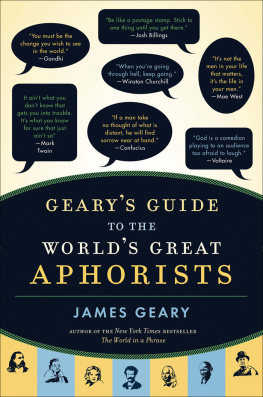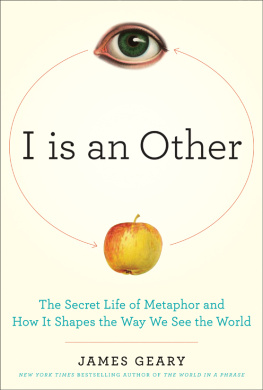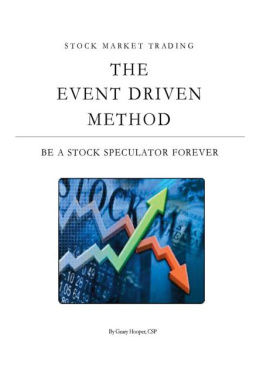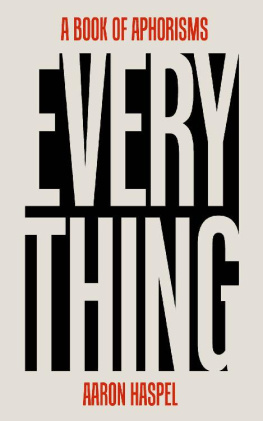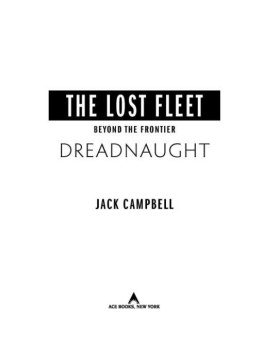Geary - Gearys Guide to the Worlds Great Aphorists
Here you can read online Geary - Gearys Guide to the Worlds Great Aphorists full text of the book (entire story) in english for free. Download pdf and epub, get meaning, cover and reviews about this ebook. year: 2009, publisher: Bloomsbury USA, genre: Art. Description of the work, (preface) as well as reviews are available. Best literature library LitArk.com created for fans of good reading and offers a wide selection of genres:
Romance novel
Science fiction
Adventure
Detective
Science
History
Home and family
Prose
Art
Politics
Computer
Non-fiction
Religion
Business
Children
Humor
Choose a favorite category and find really read worthwhile books. Enjoy immersion in the world of imagination, feel the emotions of the characters or learn something new for yourself, make an fascinating discovery.
Gearys Guide to the Worlds Great Aphorists: summary, description and annotation
We offer to read an annotation, description, summary or preface (depends on what the author of the book "Gearys Guide to the Worlds Great Aphorists" wrote himself). If you haven't found the necessary information about the book — write in the comments, we will try to find it.
Geary: author's other books
Who wrote Gearys Guide to the Worlds Great Aphorists? Find out the surname, the name of the author of the book and a list of all author's works by series.
Gearys Guide to the Worlds Great Aphorists — read online for free the complete book (whole text) full work
Below is the text of the book, divided by pages. System saving the place of the last page read, allows you to conveniently read the book "Gearys Guide to the Worlds Great Aphorists" online for free, without having to search again every time where you left off. Put a bookmark, and you can go to the page where you finished reading at any time.
Font size:
Interval:
Bookmark:
GEARY'S GUIDE TO THE WORLD'S GREAT APHORISTS
BY THE SAME AUTHOR
The World in a Phrase
The Body Electric
GEARY'S GUIDE TO THE WORLD'S GREAT
APHORISTS
JAMES GEARY
B L O O M S B U R Y
Copyright 2007 by James Geary
All rights reserved. No part of this book may be used or reproduced in any manner whatsoever without written permission from the publisher except in the case of brief quotations embodied in critical articles or reviews. For information address Bloomsbury USA, 175 Fifth Avenue, New York, NY 10010.
Published by Bloomsbury USA, New York
Distributed to the trade by Holtzbrinck Publishers
All papers used by Bloomsbury USA are natural, recyclable products made from wood grown in well-managed forests. The manufacturing processes conform to the environmental regulations of the country of origin.
LIBRARY OF CONGRESS CATALOGING-IN-PUBLICATION DATA
Geary, James, 1962
Geary's guide to the world's great aphorists / James Geary.1st U.S. ed.
p. cm.
Includes bibliographical references and indexes.
eISBN: 978-1-59691-788-0
1. Aphorisms and apothegmsHistory and criticism. 2. Aphorisms and apothegms. I. Title.
II. Title: Guide to the world's great aphorists.
PN6269.G43 2007
808.88'2dc22 2007006650
First U.S. Edition 2007
10 9 8 7 6 5 4 3 2 1
Designed by Sara Stemen
Typeset by Westchester Book Group
Printed in the United States of America by Quebecor World Fairfield
Every man is a quotation from all his ancestors.
RALPH WALDO EMERSON
CONTENTS
W HEN I lost my job, an aphorism by Vilhelm Ekelund was the first thing that popped into my mind.
I had been employed as a print journalist for almost seventeen years, the last ten of which were for the same publication. Over the decade I spent with that title, I had worked my way up from humble stringera kind of glorified gopher, the lowest form of life on the editorial food chainto regional editor, the highest position I could attain without moving to another continent. Like a lot of my colleagues, I had watched the ructions and restructurings sweeping through the media industry with some trepidation. After a false start in the late 1990s, the Internet finally seemed to be changing the basic economics of publishing. By 2006, profits were plummeting, journalists were being made redundant left and right, and magazines and newspapers were folding at an alarming rate.
But thanks to that wonderful mechanism of psychological self-preservation we all share, I always figured job loss could never happen to me. I classed unemploymentalong with other catastrophes like bankruptcy, disability, and terminal illnessin that category of ghastly events that were only visited upon the less fortunate. Middle age had yet to completely strip me of the foolish certainties of youth.
So when I was made redundant, the news came as a shock. Shock was swiftly followed by a torrent of other emotions: anger, foreboding, financial anxiety, grief, plus a weird sense of relief that a long period of tension and uncertainty was finally over. This whirlwind of emotion careened through my skull like a little localized tornado. I occasionally glimpsed pieces of my professional life as they flew pastthe camaraderie of those late Friday nights in the office, a breaking story's adrenaline rushand I waved good-bye.
I sat at my desk, stunned and disbelieving. My mind was blank, numbed by the strange banality that's wrapped around disaster. An unexpected crisis, a long-feared tragedyboth seem bizarrely ordinary when they finally happen. After a few minutes, when I was able to think again, it was of Vilhelm Ekelund, a reclusive Swedish aphorist who died in 1949, and his saying:
To be placed on treacherous ground is good; generally, you learn to stand on your own feet only when the ground is rocking under them.
Ekelund's aphorism summed up the way I hoped to deal with the situation: recognition that the foundations of my professional life had been profoundly shaken, but determination to land softly and hit the ground running. Sometimes, you need a door slammed in your face before you can hear opportunity knock.
After talking with my wife that afternoon, I decided to tell our sons, who were aged eleven and eight at the time. Our daughter was just three, too young to understand. Of course, the last thing I wanted to convey to my boys was that the ground was rocking under their dad's feet. So I was careful to phrase the news in the most neutral possible terms. The boys were in their pajamas, lying in bed reading before turning out the lights for the night. I told them that there had been some changes at work, that I wouldn't be going back to the office anymore, and that soon I would start looking for another job.
But halfway through my little speech, my younger son interrupted and said:
"You mean you're fired?"
For a moment, I was dumbstruck. My son was obviously way ahead of me, so I laughed and said: "Yes, I'm fired."
"Woohoo!" he shouted. "That means Dad is going to be home more often!"
I realized two things then: first, that my son sure has his head on straight; and second, that I still had plenty of solid ground beneath my feet.
THE POINT OF THIS BOOK
Aphorisms have been a fixture of my thinking ever since I was eight, when I first discovered the form in the "Quotable Quotes" section of Readers Digest. I imagine that Henry Scadding had predicaments like mine in mind when he published A Pioneer Gathering of Books of a Sententious Character Comprising Proverbs,Parables,Sage Summaries and Saws, Being the Contents of the Log Shanty Bookshelf forthe Year 1893 in the Pioneers Lodge, Exhibition Park, Toronto.
Scadding was a Canadian author and clergyman who emigrated from Devon, England, to Toronto in 1821, when he was eight years old. He wrote voluminously on a wide range of topics, but his greatest passion was for history, particularly that of his adopted hometown. Scadding also loved aphorisms, or "proverbs" as he called them. And given his historian's obsession with detail, he made a note of every book he owned that contained aphoristic sayings. When he was eighty, Scadding published this list as the Pioneer Gathering, which amounts to just a couple unbound printed sheets featuring works by authors ranging from Seneca to Shakespeare. In his preface, though, Scadding wrote the best ever description of an aphorism anthology.
With homely primitive folk a small stock of proverbs is found to be very useful in emergencies of the head, heart and hands. In short, the compact set of sayings thus stored up might be compared to the old-fashioned pocket-knife which young lads aforetimes were so proud to possess, containing in its handle besides several blades a great variety of little implementsa corkscrew, button-hook, gimlet, turnscrew, tweezers, pincers, fleam or lancet, &c.
That's the point of this book: to be a Swiss army knife for the mind. For more than thirty-five years now, I've carried a small stock of aphorisms around in my head. When I was laid off, a blade with one of Vilhelm Ekelund's sharpest sayings flashed out. That aphorism didn't solve any of my problems, of course.But it did help me cut through the chaos of the moment to see a place where I could make a stand. Consult this set of sayings in emergencies of the head, heart, or hands.
This book is more than just a conventional anthology, though. It is also an encyclopedia, containing brief biographies and selected aphorisms of more than 350 authorsancient and modern, famous and unknownfrom all around the globe. It stretches back to the beginnings of the aphorism in the wisdom traditions of ancient Egypt and China, and it reaches right into the present day by featuring the contemporary writers currently engaged in a revival of the form. Some of the aphorists appear here in English for the first time.
Next pageFont size:
Interval:
Bookmark:
Similar books «Gearys Guide to the Worlds Great Aphorists»
Look at similar books to Gearys Guide to the Worlds Great Aphorists. We have selected literature similar in name and meaning in the hope of providing readers with more options to find new, interesting, not yet read works.
Discussion, reviews of the book Gearys Guide to the Worlds Great Aphorists and just readers' own opinions. Leave your comments, write what you think about the work, its meaning or the main characters. Specify what exactly you liked and what you didn't like, and why you think so.

